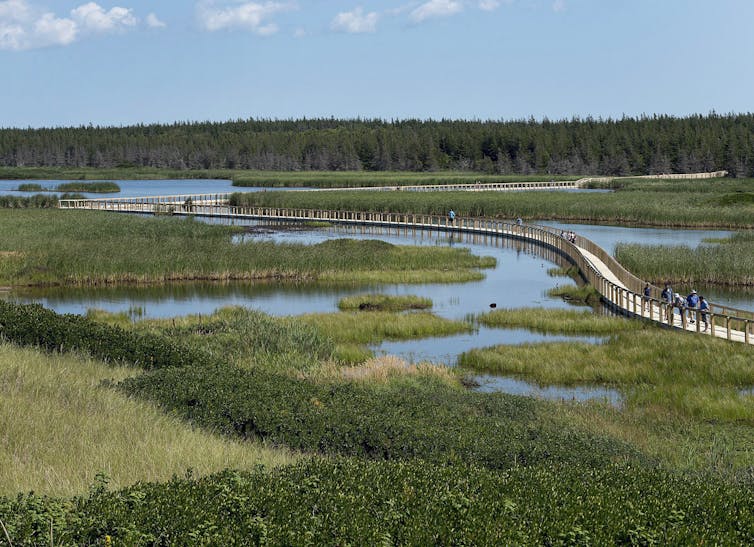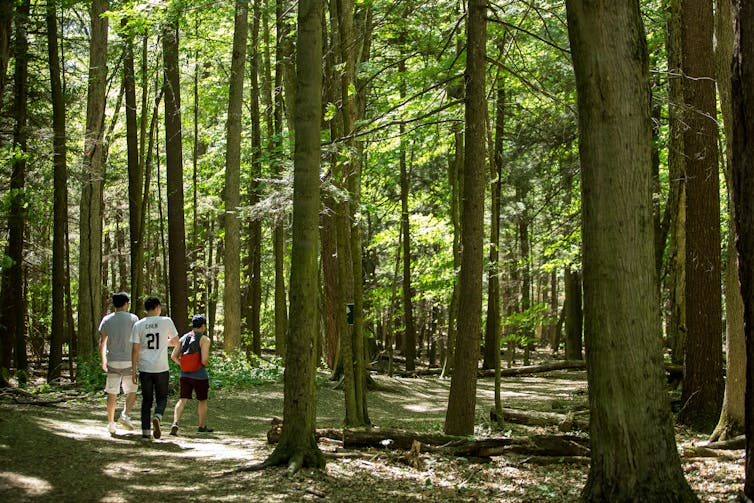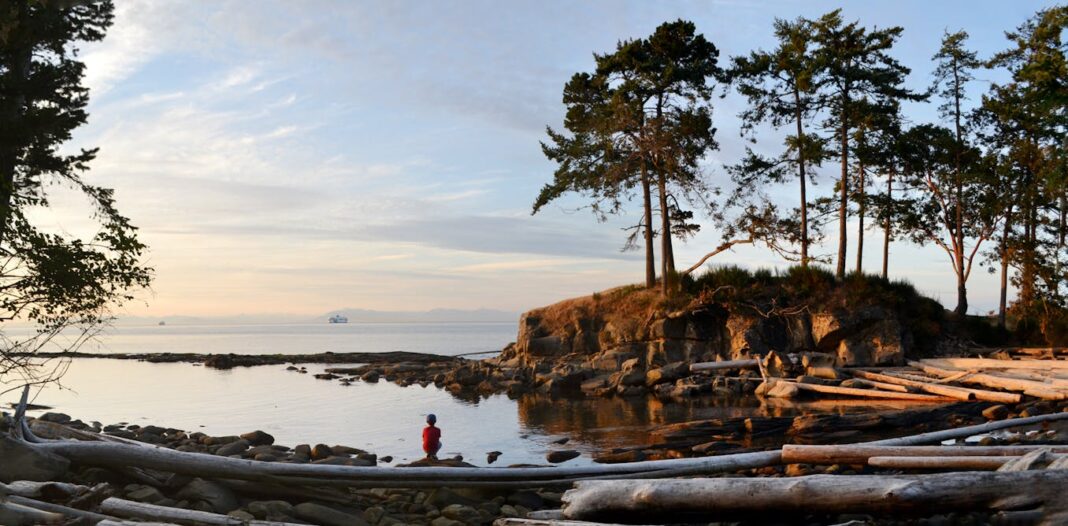In June 2020, three months after the COVID-19 pandemic shut down the world, health officials adjusted initial restrictions to allow outdoor socializing. This recommendation was well received by the public, especially by those struggling with lockdown mandates.
While national and provincial parks remained closed, people eagerly flocked to local parks, hiking trails and other outdoor areas. This demonstrated the importance of social connection, and also evoked a new appreciation for natureespecially in people who weren’t already spending much time outside.
Though restrictions have since lifted, national parks remain busier than everwith crowding and overuse increasing the risk of habitat loss, erosion and pollution. This poses challenges for conservation, and may be causing unintended harm to the very lands and waters we have grown to cherish.
Benefits of nature
It’s hardly surprising that spending time in nature is beneficial for our health, but what may be surprising is the depth of research behind this idea. Multiple studies have explored this connection, including one from Japan that found a significant decrease in stress after sitting for just 15 minutes in a forest compared to a city street.
Another study found positive effects of outdoor time on brain volume when MRI scans between participants spending variable time outside were compared. A recent comprehensive narrative review revealed that living near blue spaces positively influences physical and mental health.
THE CANADIAN PRESS/Jeff McIntosh
For those who live in urban environments, heading further afield to national parks has become a popular means of nature immersion, with recent developments in the health-care system making them more accessible.
The concept of “nature prescriptions” is gaining traction as more countries, including the United Kingdom, Japan and the United States, are offering programs where health professionals prescribe patients time outside to improve their health.
In Canada, PaRx broke ground as the first national nature prescription program in the world to partner with a national park organizationParks Canada, to offer free annual park passes to patients. Besides a variety of free and discounted outdoor offers that offset the cost of admission, PaRx — which is led by Dr. Melissa Lem, one of this authors of this story — is also working with transportation organizations to boost outdoor access.
Impact of increased use

THE CANADIAN PRESS/Andrew Vaughan
However, park officials and sightseeing hosts are voicing their concerns about the adverse effects of increased national park traffic in Canada and elsewhere. Poor behaviour and careless attitudes from some park-goers mar park experiences for others.
Vandalism has increased around Big Bend National Park in Texas, including irreparable damage to ancient petroglyphs. The land in California around Hyperionthe world’s largest living tree, has become so degraded that fines are now issued for those who stray off marked trails. At Banff National Parkone guide shared how tourists “exemplified how they viewed animals: as an attraction, a sight they were entitled to” each time they asked her: “Will you show us the wildlife today?”
Colonial attitudes towards land use have also harmed Indigenous Peoples, whose traditional practices can be disrupted when outdoor-experience and Instagram-worthy photo-seekers crowd onto their land.
Ethical use of spaces
While some tourists may view the land, animals, trees and plants as mere attractions, traditional Indigenous knowledge systems view the health of humans and the non-human world as inseparable. Disrespectful behaviours within national parks underline the disconnect between Indigenous and western worldviews.
It must be noted that many national parks were formed when Indigenous Peoples were forced off their traditional lands, while they were simultaneously marketed for their “natural beauty” to western settlers. Today, the national park system in Canada is actively working with Indigenous Peoples towards repairing these wrongs.

THE CANADIAN PRESS/Giordano Ciampini
Many policy options can be considered to encourage ethical and safe use of green and blue spaces as people fill their nature prescriptions. Outdoor organizations should forge stronger connections with programs like Leave No Trace to increase education and uptake of respectful practices.
Parks can expand their partnerships with local transportation companies and transit systems to reduce private vehicle use. Legislation to increase fines for vandalism, pollution and other harmful practices that disrupt the natural environment and our connection to it can also be considered.
Co-operation between the private sector, non-profit organizations and Indigenous, municipal, provincial and federal governments is needed to address these key issues. Ongoing investments in Indigenous-led solutions for managing and protecting national parks and other green spaces are also vital.
Increasing time spent in natural spaces is more than just a novel way to improve our health. We are part of the natural environment, and our actions have significant impacts on the land and non-humans around us.
Prioritizing the health-promoting effects of green spaces means taking a reflexive approach to our relationship with the land and each other, and learning how to act in ways that ultimately improve the health of the mountains, plains, lakes, oceans and forests we value.




